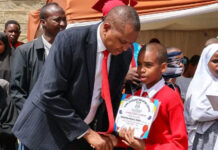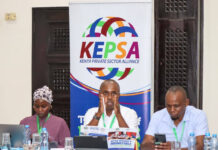Raila Amolo Odinga’s death on October 15 did not just take away a leader but it took away a part of Kenya’s political soul.
For nearly forty years, Raila wasn’t just a politician; he was a movement, a voice of defiance, and for many, a symbol of hope.
His passing has left the country feeling politically orphaned, uncertain about what comes next.
For President William Ruto, the loss also hits close to home — politically, at least. Just months before Raila’s death, Ruto had found rare common ground with his long-time rival.
Their pact, forged after the fiery Gen Z protests, was meant to calm a restless nation and give both sides a chance to rebuild trust.
Under the informal deal, Raila’s ODM party got a share of government posts and influence — a fragile peace that only Raila himself could hold together.
Now, with Raila gone, that peace feels fragile again. He was the bridge between the old and the new, the critic and the collaborator. His voice alone could quiet the storms within ODM. Without him, the party risks drifting — loyalists looking one way, reformists another.
ODM’s decision to appoint Siaya Senator Oburu Oginga, Raila’s elder brother, as interim leader shows a desire for stability. But it also reveals a hard truth — the party is caught between generations. Its senior leaders, from James Orengo to Peter Anyang’ Nyong’o and Hassan Joho, have decades of experience but little connection with the restless youth who now shape Kenya’s political pulse.
On the other side stands a new wave of ODM leaders like Edwin Sifuna and Babu Owino — bold, outspoken, and connected to the energy of the streets and social media. They speak to a generation that is tired of tribal politics and wants real change. For them, ODM’s closeness to Ruto feels like betrayal — a sellout of the struggle their movement was built on.
This generational divide could soon define ODM’s future. One side wants to keep playing it safe; the other wants to shake things up. Without Raila’s guiding hand, the party could easily split — part of it joining Ruto’s Kenya Kwanza alliance, and another rebuilding itself from the ground up as a new voice of the people.
Outside ODM, familiar faces are already circling the vacuum. Wiper leader Kalonzo Musyoka, Raila’s long-time ally, is trying to step into his shoes. But his influence remains mostly regional, and while respected, he hasn’t managed to ignite national excitement the way Raila always did.
Still, the real story might not come from the veterans at all. It might come from the young leaders — those who speak the language of protest, not patronage. Figures like Sifuna and Babu Owino, who command attention from Kenya’s digital generation, could redefine what opposition means in the years ahead.
For President Ruto, that’s both a blessing and a threat. A divided ODM could weaken his competition, but a rejuvenated, youth-led opposition could become a force he can’t contain.
Raila’s passing, then, isn’t just the end of an era — it’s the start of a reckoning. Kenya is now asking itself the same question many whispered at his funeral: Who will lead us next? Not just politically, but morally and emotionally — who will carry the dream of a fair, united, and democratic Kenya forward?










